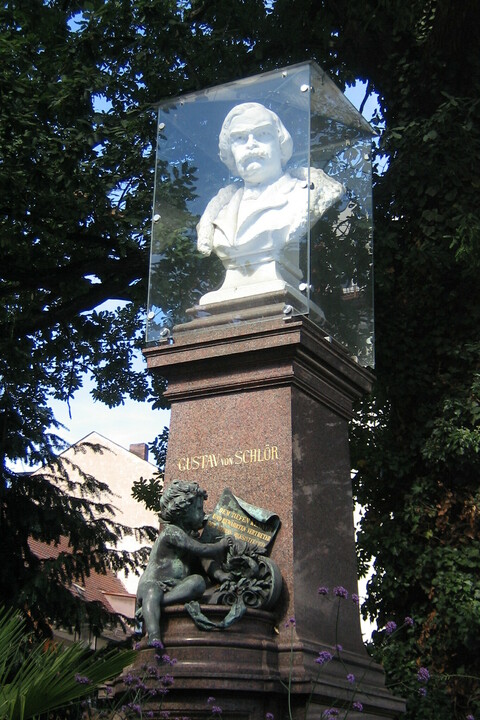Historical background of the square

The origins of Gustav-von-Schlör-Platz are rooted in history. This used to be the lower outskirts of the city, also known as the tanners’ outskirts, where the tanners plied their trade. A plot of land in the shape of a trapezoid, where the internal revenue office now stands, was developed in the Middle Ages to hold an infirmary, a church, and a cemetery.
The Gustav von Schlör memorial stands between the Jubilee Oak, which was planted in 1824 to commemorate the 25th jubilee of the reign of King Max I, and the Oak of Peace, planted in 1871. It commemorates the last Bavarian trade minister, Gustav von Schlör (1820 - 1883), who managed to get Weiden connected to the railroad line and thus established the city’s economic boom. The design for the memorial came from the Munich architect Carl Hocheder, and the marble bust was carved by the sculptor Theodor Haf.
Location and parking
Schlörplatz is by Unteres Tor at the end of the Old Town. You can park your car very close to the historical Old Town in parking garages or parking lots. The parking garage in Friedrich-Ebert-Straße is closest. See the map of the Old Town for other parking options and the location of Schlörplatz.




![[Translate to Englisch:] Schlör-Platz Weiden](/fileadmin/_processed_/1/2/csm_Schloerplatz_mit_Friedenseiche_-_Weiden_a6ed919fda.jpg)
 weiden.de
weiden.de
Data privacy Liability Legal notice